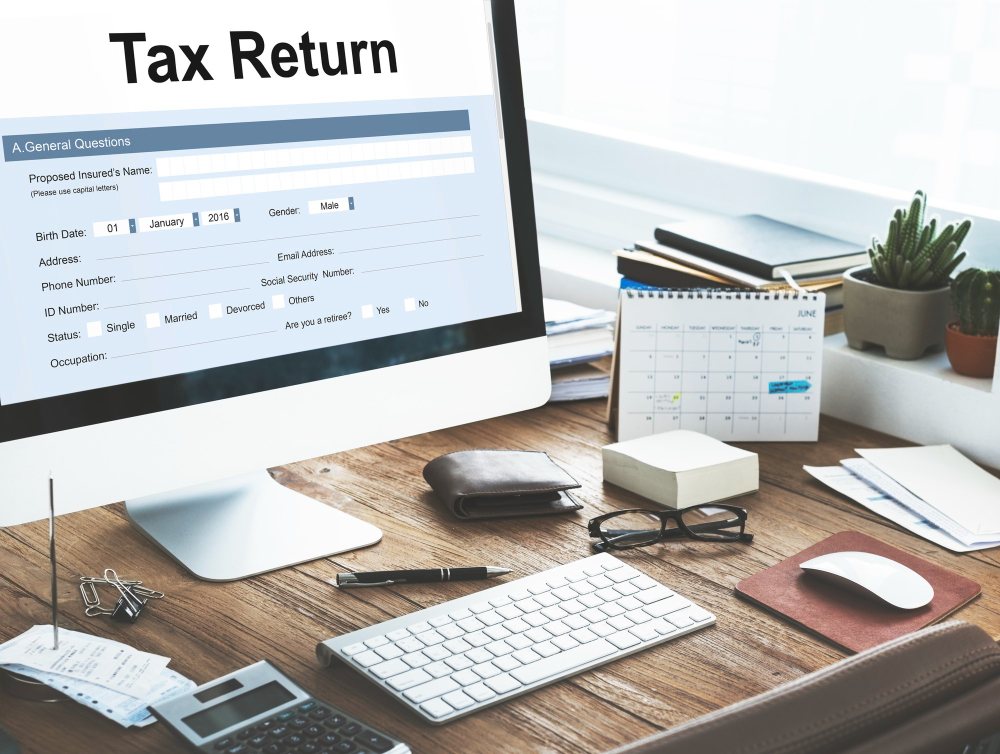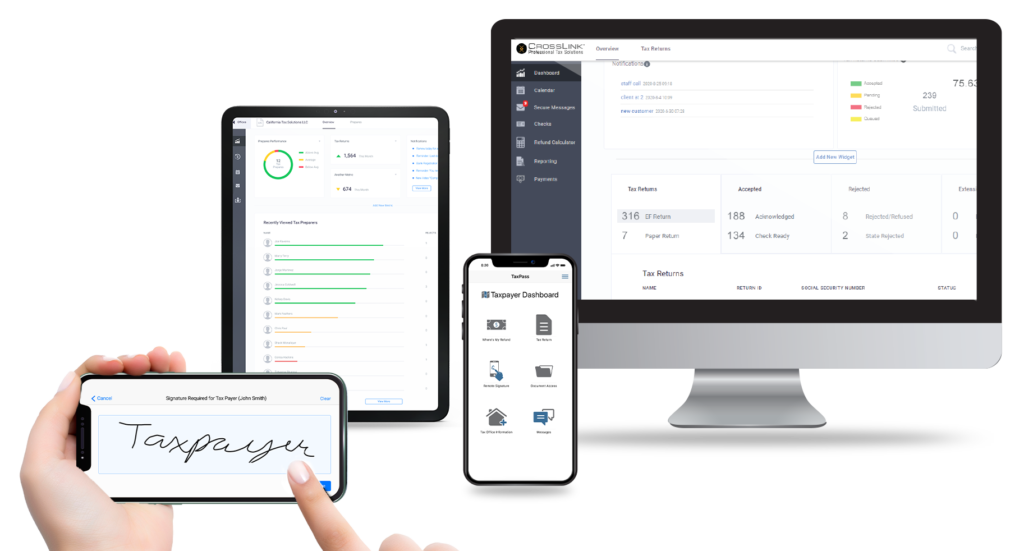Interested in learning how to eFile taxes? Looking at becoming a tax return preparer who eFiles taxes for income? This article explains everything you need to know including what e-Filing is, how it works, and the benefits to eFiling taxes.
What Is e-Filing?
Electronic filing (e-file) is the process of submitting income tax returns electronically (usually via the internet) using tax preparation software that has been approved by the IRS and State taxing authorities.

How Does e-File work?
To efile tax returns, taxpayers or tax preparers enter tax information into a tax software program. The software will check the return to ensure that all information needed to complete the return is present and that it is calculated accurately. Once it is complete, the software then transmits the return electronically to the IRS and/or State Department of Revenue. After it is transmitted, the IRS and/or the State will send an acknowledgement that the return was accepted.
Who is eligible to e-File?
Anyone who is required to file their federal or state tax return is eligible to file the return electronically.
Benefits of e-Filing
The benefits of e-Filing an income tax return are:
- It is accurate (Correct math)
The tax software that is used to complete a return and file it electronically helps taxpayers and tax preparers avoid mistakes by accurately doing the math and ensuring that all information is included for the return to be accepted by the IRS or State Revenue Department.
Filing the return electronically eliminates errors that may occur at the taxing agency when a paper return must be manually entered into their system after they receive it in the mail.
- It is secure
The e-File system meets strict security guidelines and uses modern encryption technology to protect the information on tax returns.
- It is convenient
Returns can be filed electronically at any time by the taxpayer or the tax preparer. There is no need to assemble the return, fill out an envelope, attach postage, and mail the return.
- Taxpayers receive their refunds faster
When a return is filed electronically, the taxpayer will receive their refund within 21 days provided the return does not need additional review. If the return is filed on paper, the taxpayer will receive their refund in 6 to 8 weeks.
Choosing to have the refund direct deposited will allow the taxpayer to receive their refund quicker than if they choose to have a check sent to them.
- Saves Time
Since the income tax return data is transmitted directly to the tax agency, a taxpayer saves time and money by not having to print out their income tax return, assemble it and then mail it to the tax agency. The processing of the return by the taxing agency is also completed more quickly and accurately.
Returns eligible for electronic filing
Almost all federal and state income tax returns are eligible to be filed electronically. A return may not be able to be filed electronically for the following reasons:
- A form or schedule may not be allowed to be electronically filed.
- There may be some instances where the IRS may reject a return and the rejection criteria may not be able to be corrected by the taxpayer, which would mean they would have to file the return on paper.
However, in most cases, any individual income tax return should be able to be filed electronically and accepted by the IRS and State taxing agency.
Returns that cannot be filed electronically
In some instances, an individual income tax return may not be able to be filed electronically. Some of the reasons an individual tax return may not be able to be electronically filed are:
- The return includes forms or schedules that are not allowed to be electronically filed.
- The return is rejected by the IRS or State and the taxpayer cannot resolve the reason for the return being rejected.

How to e-File Taxes
An individual may file their return electronically in one of two ways:
- Have a tax professional prepare their return and transmit it using tax software that has been approved by the IRS and States.
- Prepare the return themselves and select to file their return electronically using tax software that has been approved by the IRS and States.
Information needed
An individual does not need any special information to file their return electronically. The information that is needed to complete their federal and state tax return is all an individual needs to file their return electronically. The only requirement to file electronically is that the taxpayer must use tax software that has been approved by the IRS and State taxing agencies.
How to e-File an amended tax return
For federal purposes, the 1040X (Amended return) can be filed electronically if these scenarios are met:
- For 2021 – Original tax return was filed on paper or electronically
- For 2019 and 2020 – Only if the original 1040 return was filed electronically
- Prior to 2019 – Must file the amended return on paper
The following States allow their individual amended returns to be e-Filed:
- Arkansas
- Arizona
- California
- Colorado
- Connecticut
- District of Columbia
- Georgia
- Iowa
- Idaho
- Indiana
- Kansas
- Kentucky
- Louisiana
- Maine
- Maryland
- Massachusetts
- Michigan
- Mississippi
- Missouri
- Montana
- New Jersey
- New Mexico
- New York
- North Carolina
- North Dakota
- Ohio
- Oklahoma
- Oregon
- Pennsylvania
- Rhode Island
- South Carolina
- Utah
- Virginia
- Vermont
- West Virginia
- Wisconsin
You will need to check with each State for details on any restrictions for e-Filing amended returns and for what years can be e-Filed.
How do I know if e-File has been received?
When a return is e-Filed with the IRS or State, they will send an acknowledgement to the taxpayer that indicates the return was accepted or rejected.
If the return is accepted, the taxpayer knows that the IRS or State has received the return and will process it. The IRS or State will then send the taxpayer a refund or process their payment (if the payment was made with the return via direct debit).
If the return is rejected by the IRS or State, a reject code along with an explanation of the reason it was rejected will be provided. The taxpayer (or tax preparer) can then correct the issue identified and resubmit the return electronically until it is accepted by the IRS or State.
When can you start e-Filing?
Individual income tax returns can begin to be e-Filed each year when the IRS opens the season – usually in late January.
How to e-File state taxes only
With the exception of California, a state tax return cannot be e-Filed unless the federal return is filed at the same time as the State return or the federal return is filed before the State return.
CrossLink Tax Software
CrossLink is the industry’s best professional tax software solution for high-volume tax businesses. Built based on the needs of busy tax offices that specialize in providing their taxpayer clients with fast and accurate tax returns, CrossLink has been a trusted software solution since 1989. CrossLink’s in-depth tax calculations allow you to prepare the most complicated tax returns with confidence and ease.

